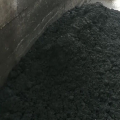|
|
 發表於 2006-7-12 09:41:33
|
顯示全部樓層
發表於 2006-7-12 09:41:33
|
顯示全部樓層
等我ㄅㄨㄚˇ ㄅㄨㄟ之後再告訴你.......
Teschen Disease
Also called Talfan disease, benign enzootic paresis or poliomyelitis suum.
Teschen disease is caused by a porcine enterovirus, serotype 1, of which there are highly virulent and mildly virulent variants. The virus probably exists throughout the world wherever pigs are kept but most infections are sub-clinical and outbreaks of clinical disease are rare.
The name Teschen disease is traditionally used for the most severe form of the disease, large outbreaks of which were reported many years ago near the borders of Germany and Poland and in Madagascar. Since then smaller, generally milder, outbreaks have occurred from time to time in other regions of the world. These milder outbreaks have usually been called by other names such as Talfan disease (Talfan is a hill in Wales where an outbreak occurred) to evade the application of a slaughter policy. Most countries in the western world had erroneously made Teschen disease notifiable very early on before it was realised that the virus was so widespread. Teschen disease was quietly removed from the EU lists of notifiable diseases several years ago.
When cases occur these days they are usually in weaned and young growing pigs. The disease does not often progress to full paralysis probably because the pigs have a level of immunity or because it is a milder strain of the virus.
It is an infection of the motor nerves only and not the sensory nerves. The pig still has sensation and can feel pin pricks.
The virus multiplies in the intestines and is shed in large quantities in the faeces. It is relatively tough, can survive outside the body, and is highly infectious requiring only a small dose of infected faeces to be ingested to establish infection in the intestines.
Within a herd the virus cycles in the weaner and follow-on accommodation. It is prevented from multiplying in the intestines of suckled piglets by the sow's lactogenic immunity, i.e. the secretory antibodies present in her milk. After the pig has been weaned the lactogenic immunity ceases to be supplied and the virus is able to multiply in the intestines but it cannot get to the nervous system (CNS) because whenever it escapes from the gut it is neutralised by the sow's colostral antibodies which are still circulating in the pig's blood stream. The virus multiplies in the intestines harmlessly for several weeks until the pig has developed an active immunity which stops it from multiplying. The pig is then immune and virus free. If its a young gilt which is retained later for breeding it will in turn pass on its antibodies to its piglets.
The virus can only reach the central nervous system (CNS), multiply in the nerves and cause damage when there are no circulating specific antibodies or when they are at too low a level. It can then be carried in the blood stream to the CNS. This situation may arise if the mother has never been infected with the virus, if the newborn piglet didn't get enough colostrum, or if the virus enters a naive herd for the first time.
Symptoms
All Pigs
Partially loses the use of its lower back legs, and then its thighs and then the rear end of its body.
The partial loss may progress to a total paralysis.
Initially the pig may be slightly off its feed and a little depressed for a day but after that it is otherwise fine with a good appetite and normal temperature.
The pig develops a drunken swaying gait from which many may recover spontaneously.
Its only problem is that it can't walk around very well and in severe cases can't rise from a dog-sitting position.
Incoordination.
In the severe form of the disease the motor nerves are totally destroyed and the disease is irreversible.
Causes / Contributing factors
Poor hygiene i.e. dirty floor surfaces, water contamination.
Environmental contamination from one pen to another i.e. boots, brushes, shovels, clothing etc.
Spread between herds through the movement of young sub-clinical carrier pigs.
Mechanical means via faeces and contaminated equipment, lorries etc.
Contaminated boots and clothing.
Vehicles.
Diagnosis
The clinical signs are suggestive but not conclusive. Serum samples can be taken to demonstrate rising antibodies in paired blood samples taken from a group of pigs at the start of the disease and 10-14 days later. Single blood samples are no good because sub-clinical infection is fairly common and so positive blood samples are also common even when no disease has been observed.
Microscopic examination of the brains and spinal cord of pigs which have been killed will show changes typical of any virus disease but they are not specific for Teschen disease.
以上資料摘路自以下網站
http://www.thepigsite.com/diseaseinfo/121/teschen-disease
~~~~~~~~~~~~~~~~~~~~~~~~~~~~~~~~~~~~~~~~~~~~~~
李醫師
您需要知道此病的臨床症狀,請參考上面的粗體字部分!!
您真是大哉問呀!台灣有沒有?等我ㄅㄨㄚˇ ㄅㄨㄟ之後再告訴你.......
另外,如果您知道台灣有沒有H5N1的AI的話,也可以告訴大家一下......
我看我們沒有證據還是不要亂散佈流行病的不實消息,免得被抓起來唷!! |
|


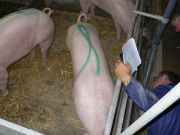

![越南非洲豬瘟疫苗蒙陰影 上百豬隻接種後死亡[轉貼]](data/attachment/block/3e/3e723490e252eebc3bc1a403febd226e.jpg)
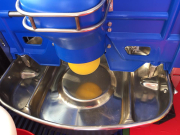
![[轉貼]從上市9頭到14頭 -- 我的養豬專業養成之路。](data/attachment/block/3c/3c17fd6b5c1b8cff34fdc7342238e082.jpg)


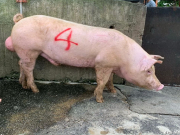
![[轉貼]這個倒霉王國,因為一隻老鼠慘遭滅國 .....](data/attachment/block/3f/3ffb7b6b8ec14613dc077bdd7603e3a5.jpg)
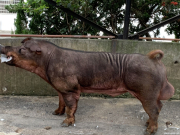



 IP卡
IP卡 狗仔卡
狗仔卡 發表於 2006-7-12 06:00:15
發表於 2006-7-12 06:00:15
 提升卡
提升卡 置頂卡
置頂卡 沉默卡
沉默卡 喧囂卡
喧囂卡 變色卡
變色卡 搶沙發
搶沙發 千斤頂
千斤頂 顯身卡
顯身卡 [信息未更新]
[信息未更新] 發表於 2006-7-12 09:41:33
發表於 2006-7-12 09:41:33

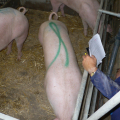

![越南非洲豬瘟疫苗蒙陰影 上百豬隻接種後死亡[轉貼]](data/attachment/block/d2/d2539d8909b33105a4f3e3b9b2e8a659.jpg)
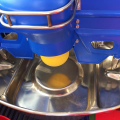
![[轉貼]從上市9頭到14頭 -- 我的養豬專業養成之路。](data/attachment/block/81/819f9b837f86a7e00498f8d95b8b9176.jpg)
